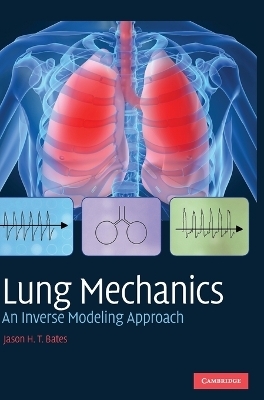
Lung Mechanics
Cambridge University Press (Verlag)
978-0-521-50960-2 (ISBN)
With mathematical and computational models furthering our understanding of lung mechanics, function and disease, this book provides an all-inclusive introduction to the topic from a quantitative standpoint. Focusing on inverse modeling, the reader is guided through the theory in a logical progression, from the simplest models up to state-of-the-art models that are both dynamic and nonlinear. Key tools used in biomedical engineering research, such as regression theory, linear and nonlinear systems theory, and the Fourier transform, are explained. Derivations of important physical principles, such as the Poiseuille equation and the wave speed equation, from first principles are also provided. Example applications to experimental data throughout illustrate physiological relevance, whilst problem sets at the end of each chapter provide practice and test reader comprehension. This book is ideal for biomedical engineering and biophysics graduate students and researchers wishing to understand this emerging field.
Jason H. T. Bates is currently a Professor of Medicine and Molecular Physiology & Biophysics in the University of Vermont College of Medicine, and a Member of the Pulmonary Division at Fletcher Allen Health Care. He is also a member of the American Physiological Society, the American Thoracic Society, the Biomedical Engineering Society, and an elected senior member of the IEEE Engineering in Medicine and Biology Society. Dr Bates has published more than 190 peer-reviewed journal papers in addition to numerous book chapters, conference abstracts, and other articles. In 1994 he was awarded the Doctor of Science degree by Canterbury University, and in 2002 he was elected a Fellow of the American Institute for Medical and Biological Engineering.
Preface; Notation; 1. Introduction; 2. Collecting data; 3. The linear single-compartment model; 4. Resistance and elastance; 5. Nonlinear single-compartment models; 6. Flow limitation; 7. Linear two-compartment models; 8. The general linear model; 9. Inverse models of lung impedance; 10. Constant phase model of impedance; 11. Nonlinear dynamic models; 12. Epilogue; References; Index.
| Erscheint lt. Verlag | 30.7.2009 |
|---|---|
| Verlagsort | Cambridge |
| Sprache | englisch |
| Maße | 180 x 253 mm |
| Gewicht | 630 g |
| Themenwelt | Medizinische Fachgebiete ► Innere Medizin ► Pneumologie |
| Medizin / Pharmazie ► Physiotherapie / Ergotherapie ► Orthopädie | |
| Studium ► 1. Studienabschnitt (Vorklinik) ► Physiologie | |
| Naturwissenschaften ► Biologie ► Genetik / Molekularbiologie | |
| Technik ► Medizintechnik | |
| ISBN-10 | 0-521-50960-2 / 0521509602 |
| ISBN-13 | 978-0-521-50960-2 / 9780521509602 |
| Zustand | Neuware |
| Haben Sie eine Frage zum Produkt? |
aus dem Bereich


